

San Diego rhino birth may help another nearly extinct rhino species
San diego researchers are making incremental progress in their bid to save the critically endangered northern white rhino species..
The baby rhino begins the day leading mom Livia in a lively sprint around the closed off rhino habitat on the eastern side of the San Diego Zoo Safari Park.
“Yeah, he is a bundle of energy, which is all typical rhino calf behaviors,” said Jonni Capiro, a wildlife care specialist at the Rhino Rescue Center.
The energetic new southern white rhino calf represents another incremental step in the effort to save a related rhino species that’s nearly extinct, the northern white rhino. Only two of the critically endangered animals, mother and daughter, remain alive. And they live half a world away in Kenya.
But that is definitely not on the mind of the young calf zooming around the enclosure with mom in tow. Livia takes a more deliberate pace but moves quickly enough to keep the youngster close.
“He’s really playful and confident,” Capiro said. “I think a lot of that has to do with the fact that mom is so confident and feeling good about her role as a mom. So, he doesn’t have a care in the world right now.”

And all that running makes a romp in the mud even more rewarding.
The young rhino eased up to a puddle, sniffs the water, and then lays down and rolls on its side. That mud bath cools the animal down, protects it from the sun’s harsh rays and keeps bugs off his hide.
The baby weighed more than 100 pounds at birth and is already more than twice that size. Full grown, the calf could tip the scales at more than 4,000 pounds.

And while the calf is cute and attracting attention, researchers are celebrating the birth because it is the first for the calf’s mom.
Livia is a member of a small herd of six southern white rhinos brought to San Diego from South Africa in 2015. Three have now proved they can get pregnant, carry a calf to term, and care for their offspring after they are born.
“We started getting exact details about the reproductive cycle,” said Barbara Durrant the San Diego Zoo Wildlife Alliance’s director of reproductive sciences. “We knew vaguely what the rhino cycle was like from the animals that were breeding here in our field habitats. But we didn’t know the details.”
Understanding the reproductive physiology of the large animals is critical because there is hope these six females could one day be surrogate moms to the closely related northern white rhino.
That species is on the precipice of extinction, thanks to war and poaching. The two living northern whites are both females, but they are too old to breed.

The six potential surrogates in San Diego could be a lifeline to keep the northern whites from going extinct.
“That’s the goal for all of us,” Durrant said. “All of us working on this project (want) a self-sustaining herd of northern white rhinos, (a herd) that we can reintroduce into native habitat. So, we’re backing way up and starting with the fundamentals.”
San Diego researchers hope to eventually implant an embryo of a northern white rhino into one of the proven moms. Those surrogates could give birth to a genetically pure northern white rhino.

But researchers are still working on exactly how to do that.
The hope is to use northern white rhino tissue in the San Diego Zoo Wildlife Alliance’s frozen zoo, to create northern white sperm and eggs.
Researchers are designing the process from scratch even basic steps like the Petrie dish culture needed to allow a fertilized egg to grow had to be worked out.
“So we’ve sort of taken protocols that we’ve learned for the horse,” said Carly Young, of the San Diego Zoo Wildlife Alliance. “And other protocols that I’ve learned using the domestic cat, deer, even human, and we’ve taken all of those protocols, this is how we’ve made the maturation media for the rhino. Because no one’s ever done this work before.”
Eventually, Young and the reproductive science's team will help create a northern white embryo.

“I have no doubt that we can produce northern white rhino embryos,” Young said. “In the near future, we could do an embryo transfer and figure out our technique to do this and actually be able to produce a northern white rhino calf.”
But challenges remain.
Durrant wants proof of concept in the field with southern white rhinos before they tap their limited supply of northern white cells.
German researchers have created northern white embryos using eggs harvested from the two living females. But creating the embryo is only half the battle.
“There’s never been a successful embryo transfer in any rhino species,” Durrant said.

But there has been incremental progress.
Two members of the herd in San Diego got pregnant from artificial insemination, the first time that was done in North America.
And the team knows more about the rhino reproductive tract, and the animal’s reproductive cycle.
And three females are now candidates for attempts to implant a southern white rhino embryo.
But the clock is ticking.

“The northern white rhino is so close to extinction now,” Durrant said. “There’s a very real possibility that before we have a northern white rhino calf that both of these females will be gone.”
That could mean researchers might actually bring a species back from extinction.
And the work being done in San Diego could help other rhino species as well.
Durrant said the population of the Sumatran Rhino has fallen to about 60 living animals. That species might also benefit from an intervention before the herd becomes too small to sustain itself.

- Give Monthly
- San Diego Zoo
- Safari Park
- Special Experiences
- Plan Your Visit
- Renew/Rejoin
- Conservation
- Take Action
- Adventure Travel

News Release
FOR IMMEDIATE RELEASE CONTACT: San Diego Zoo Wildlife Alliance Public Relations 619-685-3291 [email protected] sdzwa.org
NEWS RELEASE
Spring Babies and Summer Fun at the San Diego Zoo and Safari Park
Recent Births and Hatchings Offer Guests Opportunities to Learn about Little-Known Species, All While Having Fun
SAN DIEGO (May 11, 2023) – From Arabian oryx to Nubian ibex, to spotted turtles and Amur leopard cubs, the San Diego Zoo and Safari Park are brimming with babies! A spring baby boom provides guests to both the Zoo and Safari Park with the opportunity to see and learn about amazing wildlife including an okapi calf, a Matschie’s tree kangaroo and Przewalski’s horse at the Safari Park and Andean bear cubs, Lord Howe Island stick insects and Fijian iguanas at the Zoo.
B abies are always delightful—cute and fun to watch grow—but more importantly, they serve as ambassadors for their species. Seeing a baby animal up close provides guests the opportunity to connect with them, with the hope they gain a greater appreciation for them, and the vitally important need to conserve and protect wildlife and their native habitats.
The San Diego Zoo and Safari Park, as members of the Association of Zoos and Aquariums (AZA), participates in the AZA Species Survival Plan (SSP) to maintain a healthy, genetically diverse assurance population of various species.
Guests visiting the San Diego Zoo and Safari Park can see new wildlife, while also enjoying special events and activities:
At the San Diego Zoo
Wild Weekend: Amazonia May 20–21 Get ready for a journey into the heart of the Amazon. Join us at the Zoo for Wild Weekend: Amazonia. The weekend places a focus on the incredible wildlife like jaguar, Andean bears, and tapirs who live in this lush ecosystem. Guests can meet with conservationists from across San Diego Zoo Wildlife Alliance, talk with a horticulturist who cares for the Zoo’s plants, experience special culinary offerings, have a chance to listen to a book reading including Sloth’s Treehouse Inn and Teaching Tornero: A True Story of a Sloth Superstar from San Diego Wild Alliance Press authors, and enjoy entertainment all weekend long!
Nighttime Zoo May 26–Sept. 4 The San Diego Zoo’s annual after-dark extravaganza—Nighttime Zoo—offers guests live music, entertainment, special events and more while learning more about wildlife from an unusual nighttime perspective.
This summer, two dazzling events will light up the night. "Call of the Night"—a 12-minute symphony of live music, lasers, moving lights, rhythmic acrobats, fog and bubbles—will be presented nightly at Hua Mei Plaza; and "Jambo Dunia!, " a 15 -minute spectacular celebrating Africa along Front Street, will be led by the Zoo’s musical act, Chameleons, and showcase festive pageantry with giant, handcrafted puppets.
At the Safari Park
Journey into the Wild – all new! Join the Safari Park’s wildlife care specialists at an all-new conservation presentation highlighting a variety of wildlife ambassadors! Species will vary each day and represent San Diego Zoo Wildlife Alliance’s conservation work in South America (Amazonia) and right here in our own backyard in the Southwest. Journey into the Wild takes place daily at 2 p.m. at Benbough Amphitheater.
Safari Experiences All summer long, guests at the Safari Park can experience up-close wildlife encounters, entertainment, culinary delights and more, making memories that last a lifetime. For those guests looking to upgrade their visit, the Safari Park offers memory-making Safari Experiences including:
- A Behind-the-Scenes Safari allowing guests to venture deep into the Safari Park and get a closer look at their favorite wildlife, and meet the wildlife care specialists who care for them.
- A Wildlife Safari is a great way to see antelope, giraffes, rhinos and more from the comfort of a covered, open-air safari truck, and journey into our African savanna habitats with an expert guide.
- The Flightline Safari is an exciting zip line adventure, allowing guests to soar like a condor over the Safari Park. Riders travel more than two-thirds of a mile over the Asian and African savanna habitats of exotic wildlife, including wildebeest and antelope.
- Roar & Snore Safari is an overnight tent-camping experience that overlooks the East Africa savanna habitat, the Safari Park’s largest, inhabited by giraffes, rhinos, and more.
- Sun Up Cheetah Safari gives visitors a chance to witness the fastest animals on land doing what they do best, all before the Safari Park opens. Safari guests take an early morning expedition with an experienced guide and enjoy the remarkable sights and sounds as a new day begins.
With every visit to the Zoo and Safari Park this summer, guests become allies for wildlife. With every admission, or purchase an item, or sharing about wildlife and conservation, visitors help San Diego Zoo Wildlife Alliance take another step in achieving its mission of saving animals and plants worldwide, and creating a world where all life thrives.
About San Diego Zoo Wildlife Alliance San Diego Zoo Wildlife Alliance is a nonprofit international conservation leader, committed to inspiring a passion for nature and working toward a world where all life thrives. The Alliance empowers people from around the globe to support their mission to conserve wildlife through innovation and partnerships. San Diego Zoo Wildlife Alliance supports cutting-edge conservation and brings the stories of their work back to the San Diego Zoo and San Diego Zoo Safari Park—giving millions of guests, in person and virtually, the opportunity to experience conservation in action. The work of San Diego Zoo Wildlife Alliance extends from San Diego to eco-regional conservation “hubs” across the globe, where their expertise and assets—including the renowned Wildlife Biodiversity Bank—are able to effectively align with hundreds of regional partners to improve outcomes for wildlife in more coordinated efforts. By leveraging these skills in wildlife care and conservation science, and through collaboration with hundreds of partners, San Diego Zoo Wildlife Alliance has reintroduced more than 44 endangered species to native habitats. Each year, San Diego Zoo Wildlife Alliance’s work reaches over 1 billion people in 150 countries via news media, social media, their websites, educational resources and the San Diego Zoo Wildlife Explorers television programming, which is in children’s hospitals in 13 countries. Success is made possible by the support of members, donors and guests to the San Diego Zoo and San Diego Zoo Safari Park, who are Wildlife Allies committed to ensuring all life thrives.
Link includes:
- B-roll and photos of baby wildlife at the San Diego Zoo: Andean bear; pond turtle; Amur leopard; Lord Howe Island stick insect; Fiji iguana; yellow-spotted river turtle
- B-roll and photos of baby wildlife at the San Diego Zoo Safari Park: okapi; Przewalski’s horse; Arabian oryx; Matschie’s tree kangaroo; Nile lechwe; Nubian ibex
- San Diego Zoo Tickets
- Safari Park Tickets
- Election 2024
- Entertainment
- Newsletters
- Photography
- Personal Finance
- AP Investigations
- AP Buyline Personal Finance
- AP Buyline Shopping
- Press Releases
- Israel-Hamas War
- Russia-Ukraine War
- Global elections
- Asia Pacific
- Latin America
- Middle East
- Election Results
- Delegate Tracker
- AP & Elections
- Auto Racing
- 2024 Paris Olympic Games
- Movie reviews
- Book reviews
- Personal finance
- Financial Markets
- Business Highlights
- Financial wellness
- Artificial Intelligence
- Social Media
Rhino in San Diego pregnant, could help save subspecies
- Copy Link copied
SAN DIEGO (AP) — A southern white rhino has become pregnant through artificial insemination at the San Diego Zoo Safari Park — giving hope for efforts to save a subspecies of one of the world’s most recognizable animals, researchers announced Thursday.
Scientists will be watching closely to see if the rhino named Victoria can carry her calf to term over 16 to 18 months of gestation.
If she does, researchers hope someday she could serve as a surrogate mother and could give birth to the related northern white rhino, whose population is down to two females after decades of decimation by poachers. The mother and daughter northern white rhinos that live in a Kenya wildlife preserve are not capable of bearing calves.
The last northern white male rhino, named Sudan, was euthanized in March at the Kenya preserve because of ailing health related to his old age.
Victoria is the first to become pregnant of six female southern white rhinos the San Diego Zoo Institute for Conservation Research is testing to determine if they are fit to be surrogate mothers. If they pass the testing, they could carry northern white rhino embryos sometime within the next decade as scientists work to re-create northern white rhino embryos.
There are no northern white rhino eggs so creating an embryo would require using genetic technology.
The San Diego Zoo Institute for Conservation Research has the cell lines of 12 different northern white rhinos stored in freezing temperatures at its “Frozen Zoo.”
Scientists hope to use frozen skin cells from the dead northern white rhinos to transform them into stem cells and eventually sperm and eggs. Then the scientists would use in vitro fertilization to create embryos that would be put in the six female rhinos.
“The confirmation of this pregnancy through artificial insemination represents an historic event for our organization but also a critical step in our effort to save the northern white rhino,” said Barbara Durrant, director of reproductive Sciences at the San Diego Zoo Institute for Conservation Research.
But more challenges lie ahead, with artificial insemination of rhinos in zoos rare so far and resulting in only a few births.
Victoria is a healthy 3,747-pound (1,700-kilogram) rhino estimated to be 7 years old.
She and the other five female rhinos that range in age from 4 to 7 years old were all born in the wild and relocated to San Diego’s Safari Park in 2015. Scientists will be perfecting artificial insemination techniques and embryo transfer techniques on the females, which undergo weekly ultrasounds. Durrant recently spotted the beginning of tiny limbs of Victoria’s baby during her recent ultrasound. She is two months pregnant.
“We will know that they have proven themselves to be capable of carrying a fetus to term before we would risk putting a precious northern white rhino embryo into one of these southern white rhinos as a surrogate,” Durrant said.
The ultimate goal — which could take decades — is to create a herd of five to 15 northern white rhinos that would be returned to their natural habitat in Africa.
Some groups have said in vitro fertilization is being developed too late to save the northern white rhino, whose natural habitat in Chad, Sudan, Uganda, Congo and Central African Republic has been ravaged by conflicts in the region. They say the efforts should focus on other critically endangered species with a better chance at survival.
The southern white rhino and another species, the black rhino, are under heavy pressure from poachers who kill them for their horns to supply illegal markets in parts of Asia.
There are about 20,000 southern white rhinos in Africa.
This version corrects that there are no frozen northern white rhino eggs, not a limited amount of eggs, and corrects weight of Victoria to 3,747 pounds not 747 pounds.
Rhino pregnancy stirs hope for a nearly extinct species

Victoria, one of the southern white rhino females at the San Diego Zoo Safari Park, is pregnant after artificial insemination. San Diego Zoo Global is preparing the females to become surrogate mothers to a northern white rhino baby to be created thr
- Show more sharing options
- Copy Link URL Copied!
Victoria, a southern white rhino at the San Diego Zoo Safari Park, is pregnant. It’s an event of vital importance for a program to bring back her nearly extinct kin, the northern white rhino.
The developing baby is also a southern white rhino, conceived on March 22 through artificial insemination. The pregnancy is a dress rehearsal for the ultimate goal of creating more northern white rhinos, grown from embryos made from stem cells.
The lengthy rhino gestation period means the baby isn’t due until the summer of 2019. A failure would mean more work needs to be done, or that the female is infertile.
Only two northern white rhinos are alive today, both females. The last male, Sudan, died in March in a Kenya preserve . Another white rhino, Nola, died in November 2015 at the Safari Park . She was one of four alive at that time.
Victoria and five other female southern white rhinos at the Safari Park’s Nikita Khan Rhino Rescue Center have been conditioned for years to willingly accept the most intimate handling, such as ultrasound examination of their reproductive tracts.
Jeanne Loring, a stem cell scientist at The Scripps Research Institute, has worked on this project with the zoo for years. She expressed delight in the news.
“That’s awesome,” Loring said from Germany. “It’s an amazing feat. This is a milestone.”
Much of the rhino reproductive system hasn’t been studied before, she said. So the zoo and allied researchers like Loring have had to invent the technology as they go along.
The project’s roots go back decades to a dream inspired by Oliver Ryder, a geneticist at San Diego Zoo Global, the zoo’s conservation arm.
Ryder suggested deep-freezing tissue from endangered animals, in the hope that future technology could recreate whole animals from these cells. He established a cryobanked collection of tissue from these animals, known as the “Frozen Zoo.”
The technology to put these cells to use finally arrived in 2007. Japanese scientist Shinya Yamanaka demonstrated that adult mammalian cells can be turned into artificial embryonic stem cells. He shared a Nobel Prize in 2012 for his discovery.
Loring is leading a separate project to use the cells to treat Parkinson’s disease. These induced pluripotent stem cells, as they are called, are to be created from the patients themselves. They will be matured into brain cells of the type destroyed in Parkinson’s, then implanted into the patient’s brains.
The rhino project is even more complicated. Thawed cryopreserved tissue will be converted into the artificial embryonic stem cells, then matured into egg and sperm cells. These will be united by in vitro fertilization to create an embryo. This is what will be implanted into the southern white rhino surrogate mothers.
Loring and Ryder are co-authors of a recent study describing how stem cells were produced from four northern white rhinos with a method they say is superior. Unlike earlier methods, it doesn’t use viruses to deliver genes that help convert the cells. So the cells created have a healthier genetic profile.
The study, which has yet to be published, can be found at j.mp/rhinostem .
The Safari Park says the work may be applicable for other rhino species, including the critically endangered Sumatran and Javan rhinos.
For news and updates, visit endextinction.org/victoria .
Related reading
Can scientists clone a rhinoceros?
From stem cells, new hope for species on extinction’s brink
Could stem cells rescue an endangered species?
After her death, Nola’s legacy lives on

More from this Author
Australian platypuses, last exhibited in the us 60 years ago, coming to sd safari park.
Nov. 21, 2019
Mouse study prompts clinical trial of new pancreatic cancer therapy
Nov. 18, 2019
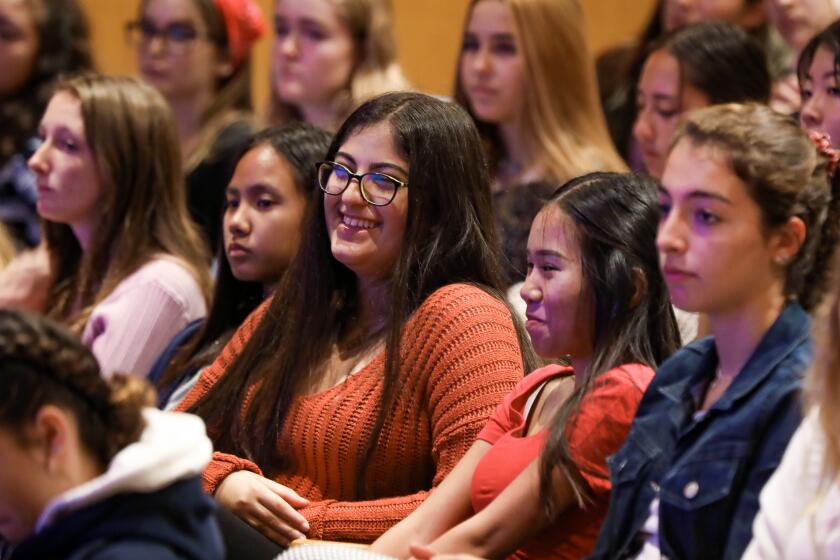
Success tips from women in science, for girls who want to go into science
Nov. 16, 2019
Jean Rivier, Salk Institute expert on stress hormones, dies at 78
Nov. 15, 2019
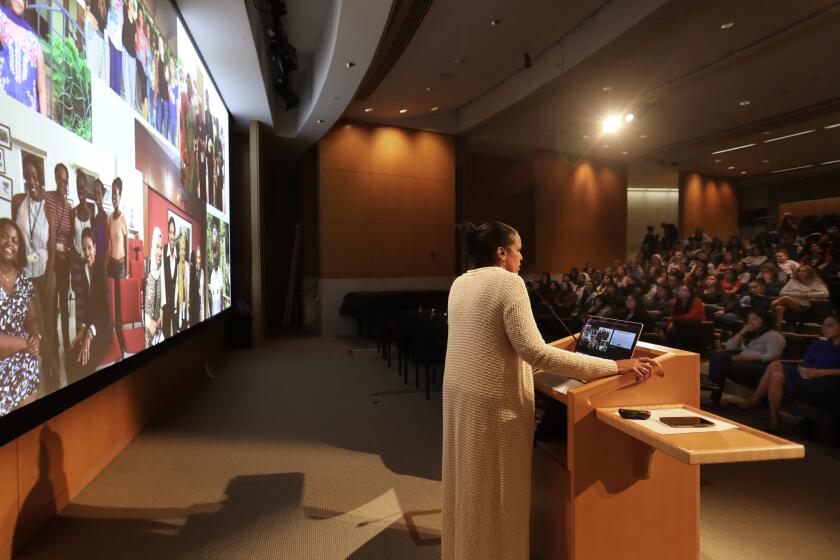
Pink shoes and a lab jacket: Finding your way as a female scientist
Nov. 13, 2019
Merck buys San Diego’s Calporta for up to $576 million
Nov. 12, 2019
Search form

- FOR SCIENTISTS
- Frozen Zoo®
- Native Plant Seed Bank
- Safari Park Biodiversity Reserve
- Pathology Archives
- Amphibian Disease Laboratory
- Molecular Diagnostics Lab
- Chromosome Atlas
- Sperm Atlas
- FOR TEACHERS
- Conservation Education Lab
- Eddy Family Outdoor Learning Lab
- Highlighted Project
- Endowment Opportunities

- Postdoctoral Fellowship Program
- Training in Veterinary Pathology
- AIP Masters Degree Program
- Teacher Workshops
- Field Trips
- Seminars & Special Events
- Native Biodiversity Corps

- Reptiles & Amphibians

- Conservation Genetics
- Reproductive Sciences
- Population Sustainability
- Disease Investigations
- Plant Conservation
- Recovery Ecology
- Community Engagement
- Biodiversity Banking
- Full Staff List
- Mission, Purpose, and Values
- Beckman Center for Conservation Research
- Associated Facilities
- Global Field Stations
Institute News
Second southern white rhino at san diego zoo safari park is pregnant through artificial insemination.
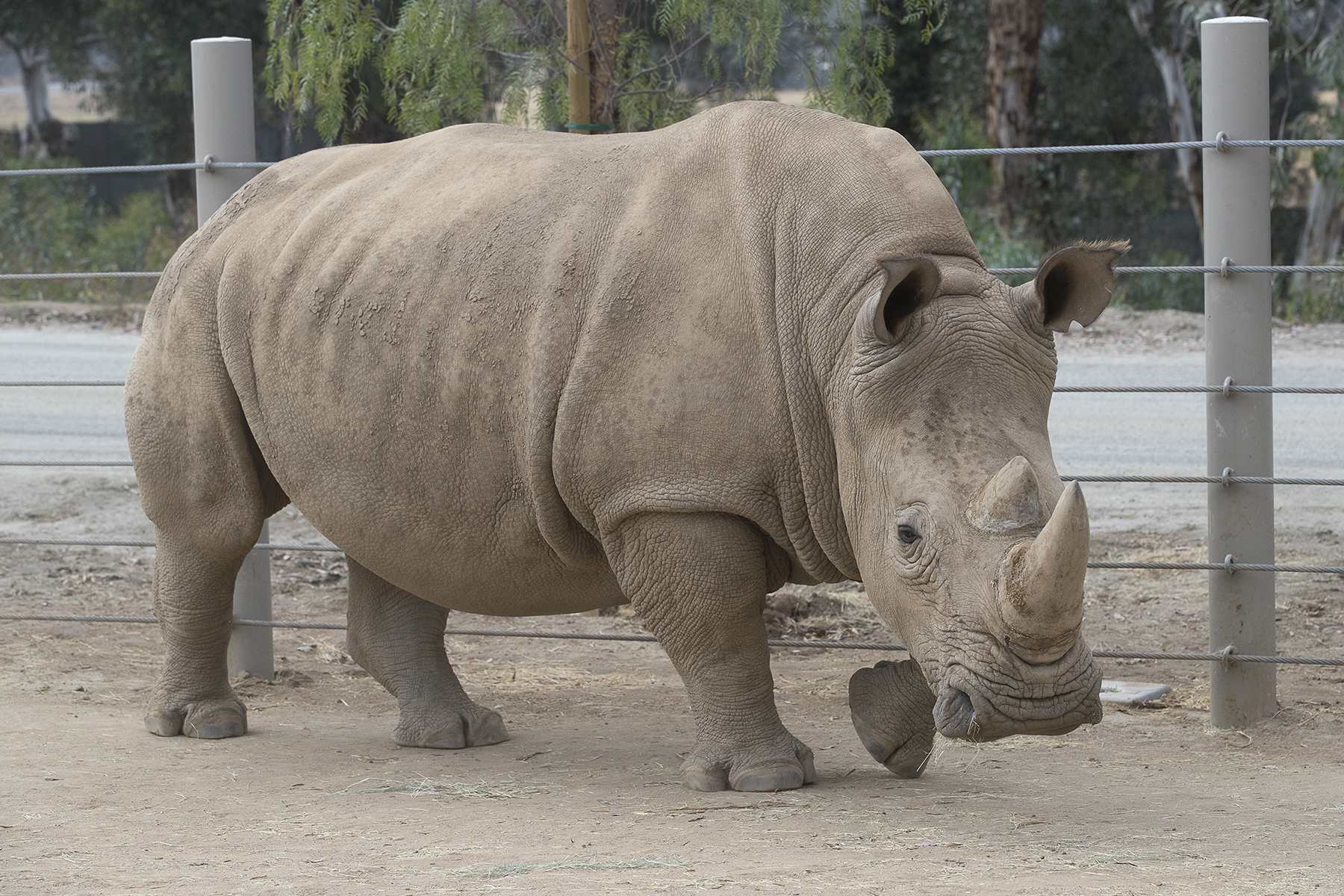
Success Further Boosts San Diego Zoo Global’s Efforts to Save the Critically Endangered Northern White Rhino from Extinction
For a second time this year, and just in time for World Rhino Day Sept. 22, researchers at the San Diego Zoo Institute for Conservation Research announced today (Sept. 18, 2018) that they have confirmed a pregnancy in another one of the six southern white rhinos living at the Nikita Kahn Rhino Rescue Center: 10-year-old Amani. The pregnancy, made possible through artificial insemination with sperm from a male southern white rhino named J Gregory, is important to the ongoing work to develop scientific knowledge required to genetically recover the northern white rhino, a close relative of the southern white rhino. Only two northern white rhinos currently remain on Earth and, unfortunately, both are female.
“Many months of intensive animal training, reproductive research and veterinary care resulted in these two ongoing pregnancies from artificial insemination,” said Barbara Durrant, Ph.D., Henshaw endowed director of reproductive sciences, San Diego Zoo Global. “We are following Victoria and Amani closely, continuing to gather critical information about early fetal development and the endocrinology of rhino pregnancy. The team is anxiously awaiting the arrival of our very special babies!”
Rhino gestation lasts from 16 to 18 months. The artificial insemination of Amani occurred July 12 at the San Diego Zoo Safari Park. It was announced earlier this year, in May, that Victoria, another southern white rhino, had become pregnant by artificial insemination. The two females, along with four other female southern white rhinos, were relocated to the Safari Park from private reserves in South Africa in November 2015. Artificial insemination of rhinos has rarely been attempted in zoos, and only a few births have resulted from this procedure in the past.
The San Diego Zoo Safari Park has been fortunate to be able to provide the space and social structure necessary to encourage natural breeding of southern white rhinos, black rhinos and greater one-horned rhinos in zoos. Sadly, the challenges associated with limited gene pools and severely reduced numbers facing Javan rhinos, Sumatran rhinos and northern white rhinos means that some form of assisted reproduction may be their only hope for the future.
A key element of the program at the Rhino Rescue Center is the ability of animal care staff to work closely with the rhinos, building positive relationships, so the rhinos participate voluntarily in procedures like artificial insemination and ongoing monitoring of pregnancies.
If Amani and Victoria are able to carry their pregnancies to term, the first southern white rhino calves born at the Nikita Kahn Rhino Rescue Center could arrive in late 2019.
To reach the ultimate goal of successfully producing a northern white rhino, multiple steps must be accomplished. One of the first steps involved sequencing the genome of the northern white rhino to clarify the extent of genetic divergence from its closest relative, the southern white rhino. The analysis revealed that they are distinct subspecies. Another step requires conversion of cells preserved from 12 individual northern white rhinos in the San Diego Zoo Institute for Conservation Research’s Frozen Zoo® to stem cells that could develop into sperm and eggs—a process successfully begun in the laboratory of Jeanne Loring, Ph.D., of The Scripps Research Institute, with details of the process published in 2011.
Reproductive options include artificial insemination, in vitro fertilization and embryo transfer, with the southern white rhinos serving as surrogates for northern white rhino embryos. The reproductive system of rhinos is very complex, and there is still much to be learned. There are many challenges ahead, but researchers are optimistic that a northern white rhino calf could be born from these processes within 10 to 15 years. This work also may be applied to other rhino species, including critically endangered Sumatran and Javan rhinos.
San Diego Zoo Global has been working on rhino conservation for more than 40 years. To learn more, visit endextinction.org
Most Recent

Second Rhino Pregnancy at San Diego Zoo Safari Park Shows Promise for Continued Efforts Against Extinction
The mother-to-be is named amani, and she came to san diego in 2015, by andrew johnson • published september 18, 2018 • updated on september 19, 2018 at 8:01 am.
A southern white rhino is pregnant, the San Diego Zoo Safari Park announced Tuesday; another step in stopping the extinction of an entire rhino subspecies.
Amani is a 10-year-old southern white rhino who was artificially inseminated on July 12. The father is a southern white rhino named J Gregory.
She was one of six rhinos relocated from private reserves in South Africa to the safari park in 2015.
It’s the second white rhino pregnancy at the zoo this year. The first, Victoria, was announced back in May. She was also artificially inseminated.
Artificial insemination of rhinos is rarely attempted in zoos with even fewer births, the safari park said.
“The team is anxiously awaiting the arrival of our very special babies,” San Diego Zoo spokesperson, Dr. Barbara Durrant, said.
Rhino pregnancies last anywhere between 16 to 18 months, according to the San Diego Zoo.

The last male northern white rhino, Sudan, was euthanized in March because of old age. He was 45.

Share your feedback with NBC 7 San Diego

Things to do this weekend in San Diego: Mission Fed Artwalk, Belanova and more
There are now only two northern white rhinos left on Earth – both female.
The southern white rhino is the closest relative to the northern white rhino, although they are two distinct subspecies. Still, the southern white rhino may be the key to saving its close relatives, the zoo said.
Southern white rhinos can serve as surrogates for northern white rhino embryos created from frozen stem cells the San Diego Zoo Institute for Conservation Research has collected.
It’s very possible that a northern white rhino calf is born in the next 10 to 15 years, according to researchers at the institute.
This isn’t the only effort the zoo has made in protecting critically endangered rhinos.
The pregnancy announcement comes one day after the San Diego Safari Park said it was relocating an east African black rhino to Tanzania.
The relocation aims to help stop the decline of black rhinos. There are only 5,000 left on the planet.
[G] San Diego's Cutest Critters
World Rhino Day is September 22, and the Safari Park is sure to celebrate the exciting pregnancy and other work that could help stop total extinction.
This article tagged under:
share this!
May 17, 2018
Rhino in San Diego pregnant, could help save subspecies
by Julie Watson
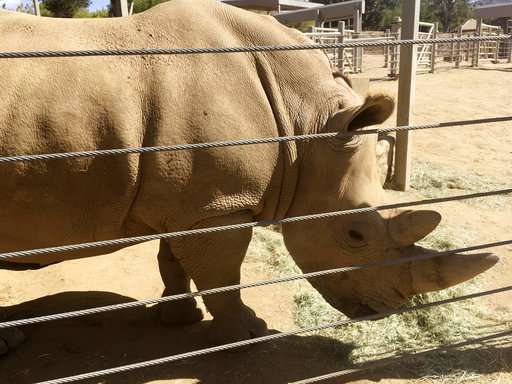
A southern white rhino has become pregnant through artificial insemination at the San Diego Zoo Safari Park—giving hope for efforts to save a subspecies of one of the world's most recognizable animals, researchers announced Thursday.
Scientists will be watching closely to see if the rhino named Victoria can carry her calf to term over 16 to 18 months of gestation.
If she does, researchers hope someday she could serve as a surrogate mother and could give birth to the related northern white rhino, whose population is down to two females after decades of decimation by poachers. The mother and daughter northern white rhinos live in a Kenya wildlife preserve but are not capable of bearing calves.
News of Victoria's pregnancy was confirmed two months after the death of the last northern white male rhino named Sudan, who was also at the Kenya preserve and was euthanized because of ailing health in old age.
Victoria is the first of six female southern white rhinos the San Diego Zoo Institute for Conservation Research is testing to determine if they are fit to be surrogate mothers. If she and the others are deemed fit to do so, they could carry northern white rhino embryos sometime within the next decade as scientists work to re-create northern white rhino embryos.
There are no northern white rhino eggs so creating an embryo would require using genetic technology. Scientists plan to use frozen skin cells from dead northern white rhinos to transform them into stem cells and eventually sperm and eggs. Then the scientists would use in vitro fertilization to create embryos that would be put in the six female rhinos.
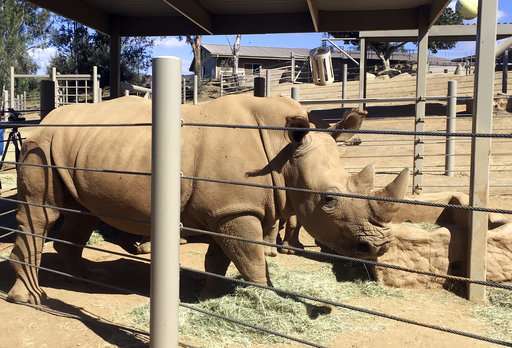
"The confirmation of this pregnancy through artificial insemination represents an historic event for our organization but also a critical step in our effort to save the northern white rhino," said Barbara Durrant, director of reproductive Sciences at the San Diego Zoo Institute for Conservation Research.
But more challenges lie ahead, with artificial insemination of rhinos in zoos rare so far and resulting in only a few births.
Victoria is a healthy 747-pound (1,700-kilogram) rhino estimated to be seven years old.
She and the other five female rhinos that range in age from four to seven years old were all born in the wild and relocated to San Diego's Safari Park in 2015. Scientists will soon start developing artificial insemination techniques and embryo transfer techniques for them. The rhinos also undergo weekly ultrasounds.
"We will know that they have proven themselves to be capable of carrying a fetus to term before we would risk putting a precious northern white rhino embryo into one of these southern white rhinos as a surrogate," Durrant said.
While embryos have been created for southern white rhinos, they haven't been for northern white rhinos.
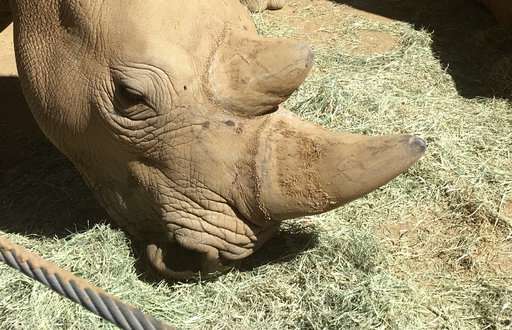
The San Diego Zoo Institute for Conservation Research has the cell lines of 12 different northern white rhinos stored in freezing temperatures at its "Frozen Zoo."
The ultimate goal is to create a herd of five to 15 northern white rhinos that would be returned to their natural habitat in Africa. That could take decades.
Some groups have said in vitro fertilization is being developed too late to save the northern white rhino, whose natural habitat in Chad, Sudan, Uganda, Congo and Central African Republic has been ravaged by conflicts in the region. They say the efforts should focus on other critically endangered species with a better chance at survival.
The southern white rhino and another species, the black rhino, are under heavy pressure from poachers who kill them for their horns to supply illegal markets in parts of Asia.
There are about 20,000 southern white rhinos in Africa.
© 2018 The Associated Press. All rights reserved.
Explore further
Feedback to editors

Probing the effects of interplanetary space on asteroid Ryugu
3 hours ago

T. rex not as smart as previously claimed, scientists find

Human activities have an intense impact on Earth's deep subsurface fluid flow
19 hours ago

DNA study of Avar cemetery remains reveals network of large pedigrees and social practices
22 hours ago

Global study shows a third more insects come out after dark
Apr 27, 2024

Cicada-palooza! Billions of bugs to blanket America

Getting dynamic information from static snapshots

Ancient Maya blessed their ballcourts: Researchers find evidence of ceremonial offerings in Mexico

Optical barcodes expand range of high-resolution sensor
Apr 26, 2024

Ridesourcing platforms thrive on socio-economic inequality, say researchers
Relevant physicsforums posts, is 5 milliamps at 240 volts dangerous.
9 hours ago
The Cass Report (UK)
Apr 24, 2024
Major Evolution in Action
Apr 22, 2024
If theres a 15% probability each month of getting a woman pregnant...
Apr 19, 2024
Can four legged animals drink from beneath their feet?
Apr 15, 2024
Mold in Plastic Water Bottles? What does it eat?
Apr 14, 2024
More from Biology and Medical
Related Stories

Health of world's last male northern white rhino in decline
Mar 1, 2018

Scientists hope to save northern white rhino from extinction
Mar 6, 2018

World's last male northern white rhino, Sudan, dies
Mar 20, 2018

Poachers shoot dead three rhinos inside Kenyan sanctuary
May 3, 2018
Horns and body of Nola the rhino to be preserved at Smithsonian
Nov 25, 2015


Efforts to save rare northern white rhino continue
Dec 19, 2014
Recommended for you

Florida dolphin found with highly pathogenic avian flu: Report

First-of-its-kind study shows that conservation actions are effective at halting and reversing biodiversity loss
Apr 25, 2024

Cichlid fishes' curiosity promotes biodiversity: How exploratory behavior aids in ecological adaptation

Targeted culling of starfish found to help Great Barrier Reef maintain or increase cover
Let us know if there is a problem with our content.
Use this form if you have come across a typo, inaccuracy or would like to send an edit request for the content on this page. For general inquiries, please use our contact form . For general feedback, use the public comments section below (please adhere to guidelines ).
Please select the most appropriate category to facilitate processing of your request
Thank you for taking time to provide your feedback to the editors.
Your feedback is important to us. However, we do not guarantee individual replies due to the high volume of messages.
E-mail the story
Your email address is used only to let the recipient know who sent the email. Neither your address nor the recipient's address will be used for any other purpose. The information you enter will appear in your e-mail message and is not retained by Phys.org in any form.
Newsletter sign up
Get weekly and/or daily updates delivered to your inbox. You can unsubscribe at any time and we'll never share your details to third parties.
More information Privacy policy
Donate and enjoy an ad-free experience
We keep our content available to everyone. Consider supporting Science X's mission by getting a premium account.
E-mail newsletter

Welcome, Zuli!
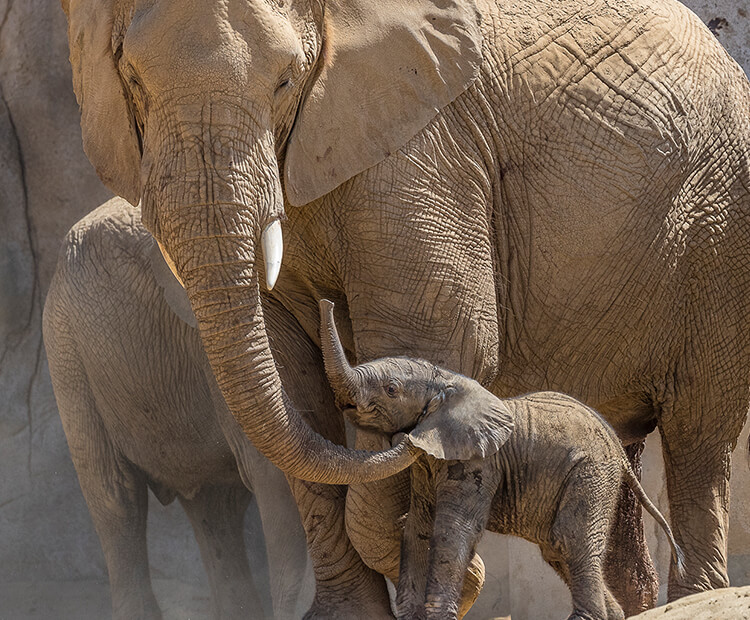
The San Diego Zoo Safari Park celebrated World Elephant Day on August 12, 2018, in the best way—by welcoming a new baby elephant! The “little” boy—he weighed 277 pounds—got a big name, Umzula-zuli, so we just call him “Zuli” for short. His mother, Ndulamitsi, took great care of her baby from the very start and nursed him right away. Baby elephants spend about two hours a day drinking from their moms. Newborn calves may look a little clumsy as they work on their coordination, but they are able to walk only 30 minutes after birth!
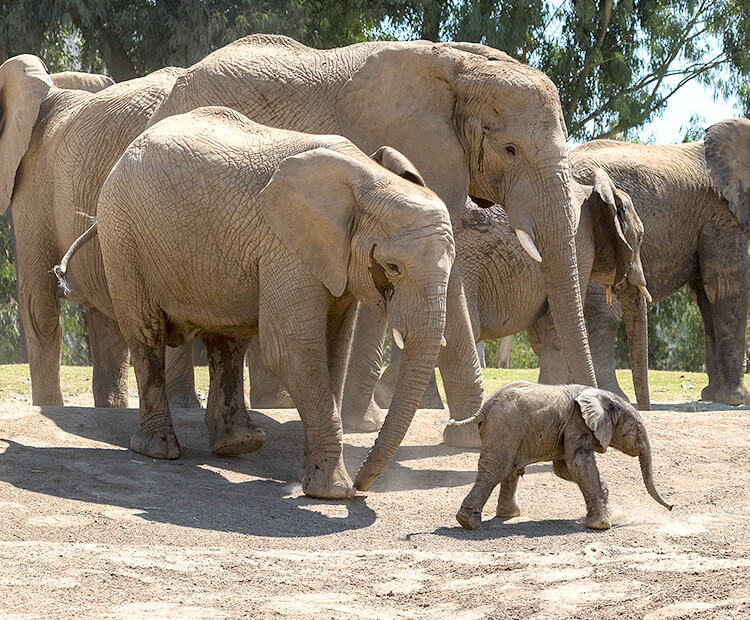
A happy family
The day after he was born, the whole herd wanted to meet the new baby. They took turns sniffing their new herd member, patting him with their trunks, and trumpeting. Everyone celebrated!
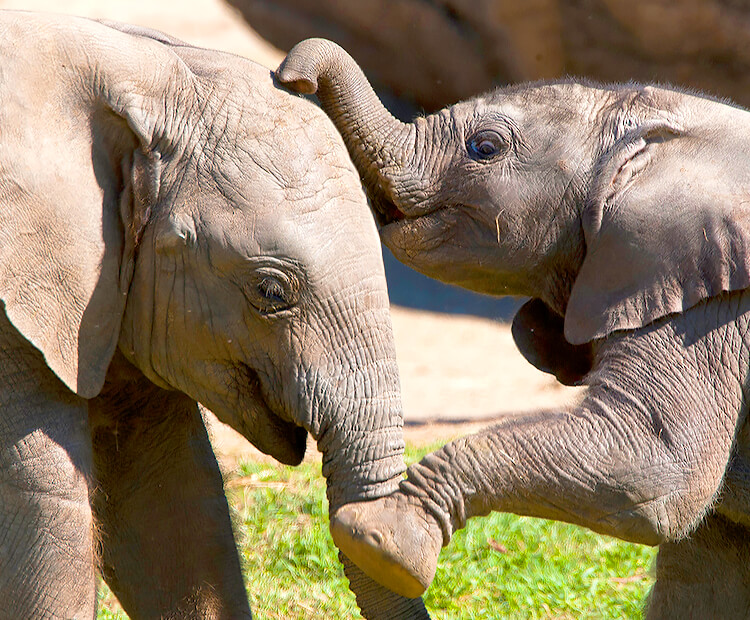
Elephant playtime
Zuli has other young elephants to play with, including his older brother, Lutsandvo (Luti). As Zuli gets bigger and has started exploring his world, Ndula is getting a lot of help taking care of him. Young female elephants in the herd, Kami, Nisa, and Khosi, all want to be his babysitter. There seems to be a competition to see who gets to spend the most time with the new calf. The herd has 13 members—4 adults and 9 youngsters.
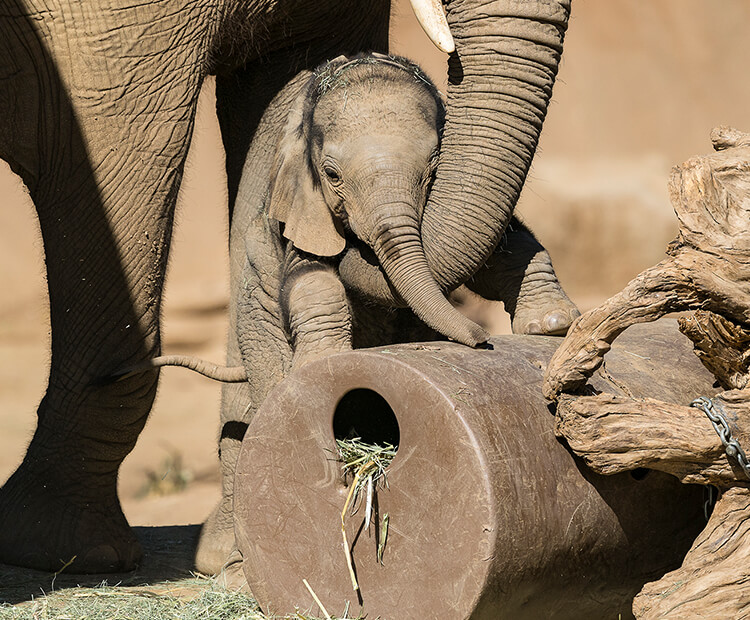
A brave boy
Even though Ndula follows Zuli closely, it looks like the active boy wants to have as many adventures as possible! While mom wants to eat goodies from an enrichment canister, her son wants to climb and explore log piles and see how far you can slide on a pile of hay. Ndula is always watching, and when Zuli gets a little wild, Ndula uses a nudge with her trunk to “help” him remember to be careful—where would we be without our moms?
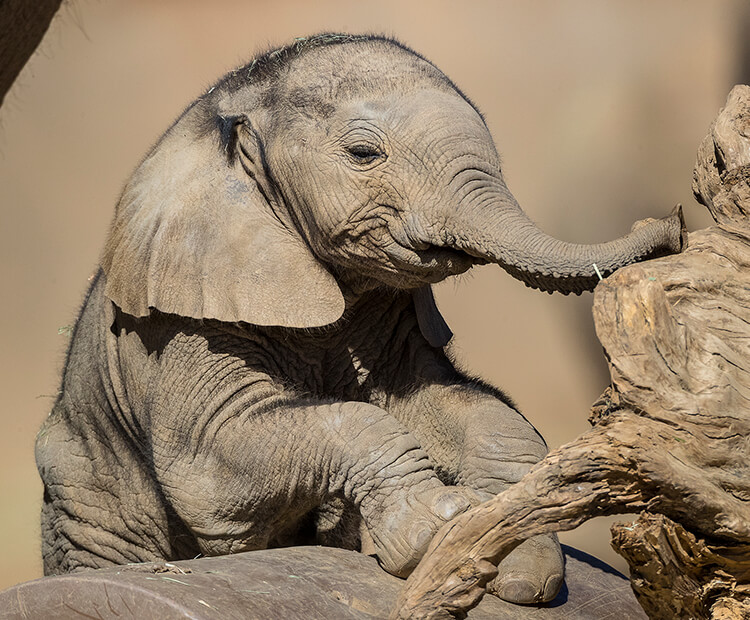
Watch Zuli live!
And what will Zuli discover next? You can see him at the Safari Park, or keep an eye on him and his herd on the Safari Park’s Elephant Cam, at sdzsafaripark.org/elephant-cam .
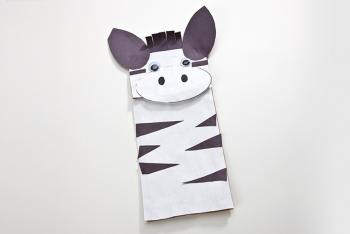
- Latest Latest
- The West The West
- Sports Sports
- Opinion Opinion
- Magazine Magazine
Rhino in San Diego pregnant, could help save subspecies
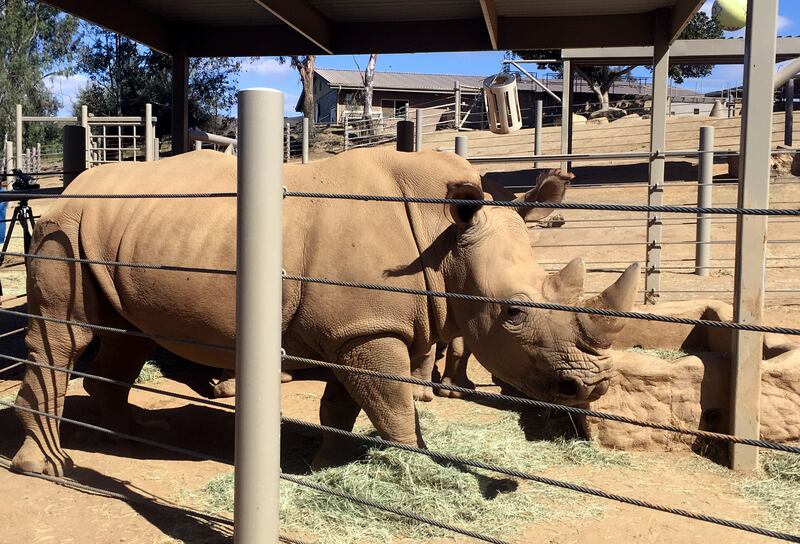
By Associated Press
SAN DIEGO — A southern white rhino has become pregnant through artificial insemination at the San Diego Zoo Safari Park — giving hope for efforts to save a subspecies of one of the world's most recognizable animals, researchers announced Thursday.
Scientists will be watching closely to see if the rhino named Victoria can carry her calf to term over 16 to 18 months of gestation.
If she does, researchers hope someday she could serve as a surrogate mother and could give birth to the related northern white rhino, whose population is down to two females after decades of decimation by poachers. The mother and daughter northern white rhinos that live in a Kenya wildlife preserve are not capable of bearing calves.
The last northern white male rhino, named Sudan, was euthanized in March at the Kenya preserve because of ailing health related to his old age.
Victoria is the first to become pregnant of six female southern white rhinos the San Diego Zoo Institute for Conservation Research is testing to determine if they are fit to be surrogate mothers. If they pass the testing, they could carry northern white rhino embryos sometime within the next decade as scientists work to re-create northern white rhino embryos.
There are no northern white rhino eggs so creating an embryo would require using genetic technology.
The San Diego Zoo Institute for Conservation Research has the cell lines of 12 different northern white rhinos stored in freezing temperatures at its "Frozen Zoo."
Scientists hope to use frozen skin cells from the dead northern white rhinos to transform them into stem cells and eventually sperm and eggs. Then the scientists would use in vitro fertilization to create embryos that would be put in the six female rhinos.
"The confirmation of this pregnancy through artificial insemination represents an historic event for our organization but also a critical step in our effort to save the northern white rhino," said Barbara Durrant, director of reproductive Sciences at the San Diego Zoo Institute for Conservation Research.
But more challenges lie ahead, with artificial insemination of rhinos in zoos rare so far and resulting in only a few births.
Victoria is a healthy 747-pound (1,700-kilogram) rhino estimated to be 7 years old.
She and the other five female rhinos that range in age from 4 to 7 years old were all born in the wild and relocated to San Diego's Safari Park in 2015. Scientists will be perfecting artificial insemination techniques and embryo transfer techniques on the females, which undergo weekly ultrasounds. Durrant recently spotted the beginning of tiny limbs of Victoria's baby during her recent ultrasound. She is two months pregnant.
"We will know that they have proven themselves to be capable of carrying a fetus to term before we would risk putting a precious northern white rhino embryo into one of these southern white rhinos as a surrogate," Durrant said.
The ultimate goal — which could take decades — is to create a herd of five to 15 northern white rhinos that would be returned to their natural habitat in Africa.
Some groups have said in vitro fertilization is being developed too late to save the northern white rhino, whose natural habitat in Chad, Sudan, Uganda, Congo and Central African Republic has been ravaged by conflicts in the region. They say the efforts should focus on other critically endangered species with a better chance at survival.
The southern white rhino and another species, the black rhino, are under heavy pressure from poachers who kill them for their horns to supply illegal markets in parts of Asia.
There are about 20,000 southern white rhinos in Africa.
This version corrects that there are no frozen northern white rhino eggs, not a limited amount of eggs.
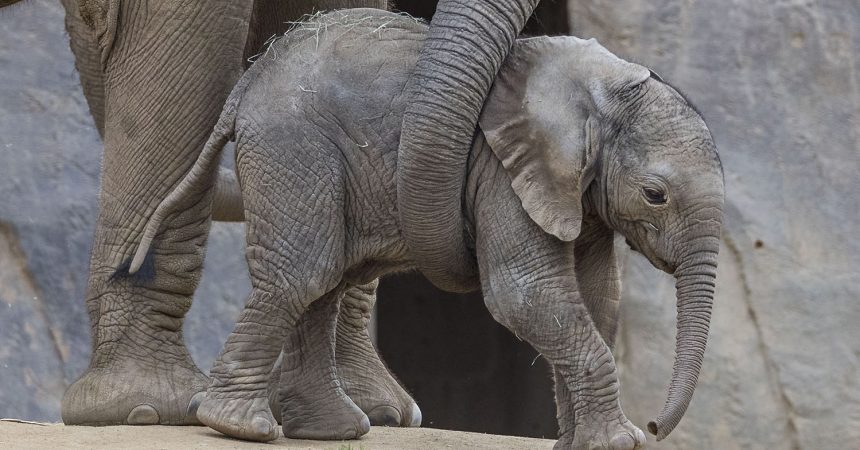
Elephant Calf Named Mkhaya
The San Diego Zoo Safari Park is proud to announce that the newest baby elephant born at the Park has been named Mkhaya. The youngest member of the herd—born Sept. 26 to mother Umngani (pronounced OOM-gah-nee)—was named for Mkhaya, a wildlife reserve in the southern African nation of Swaziland. The name follows the Safari Park’s tradition of naming African elephants using Swahili-based words.
The youngster’s name was selected after consultation with wildlife experts in Kenya. “I find the name Mkhaya well fitting, as it agrees with our naming considerations linked to place of rescue,” said Paul Leringato, chief executive officer of the Reteti Elephant Sanctuary. “Because its mother is from Swaziland, the naming tells a good story.”
San Diego Zoo Global collaborates with the Reteti Elephant Sanctuary in Africa, which operates a community-based elephant orphanage that cares for injured and orphaned elephants in the Namunyuk region of Kenya. Many of the orphan elephant calves at the community-run center are given Swahili-based names derived from the areas where they were found.
Collaboration on naming is not the only way the two populations of elephants—at the Safari Park and in Kenya—influence each other. The recent births of two elephants at the Safari Park provide an opportunity for animal care experts in San Diego and in Africa to share information about growth rates, nutrition and maternal care, to help improve animal care and conservation efforts in both countries.
At the San Diego Zoo Safari Park, little Mkhaya (nicknamed “Kaia”) joins a herd of 13 other elephants—four adults and 9 youngsters. The adults were rescued in 2003 from Swaziland, where they had faced being culled due to challenges related to reduced habitat. The two new calves and their herd may be seen at the Safari Park’s elephant habitat and on the Safari Park’s Elephant Cam, at sdzsafaripark.org/elephant-cam.
Related Posts
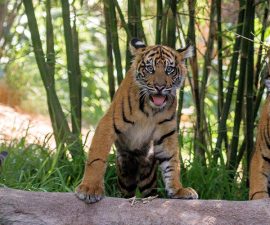
Tiger Cubs Explore New Habitat at the San Diego Zoo Safari Park
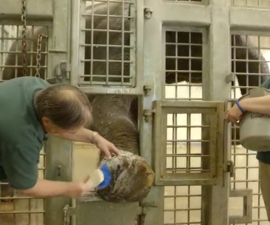
Elephant Transport Re-routed to San Diego Zoo; Conrad Prebys Elephant Care Center Hosts Medical Check
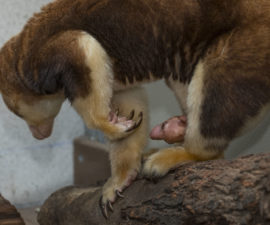
Endangered Matschie’s Tree Kangaroo Joey Born at Safari Park
Recommended.

The Hatch of 2020
- Wildlife Care
- Help Center
- Plan Your Visit
- Places to Stay
- Youth Programs
- Student & Youth Groups
- Dining Programs
- Events & Catering
- Live Cameras
- Our Mission
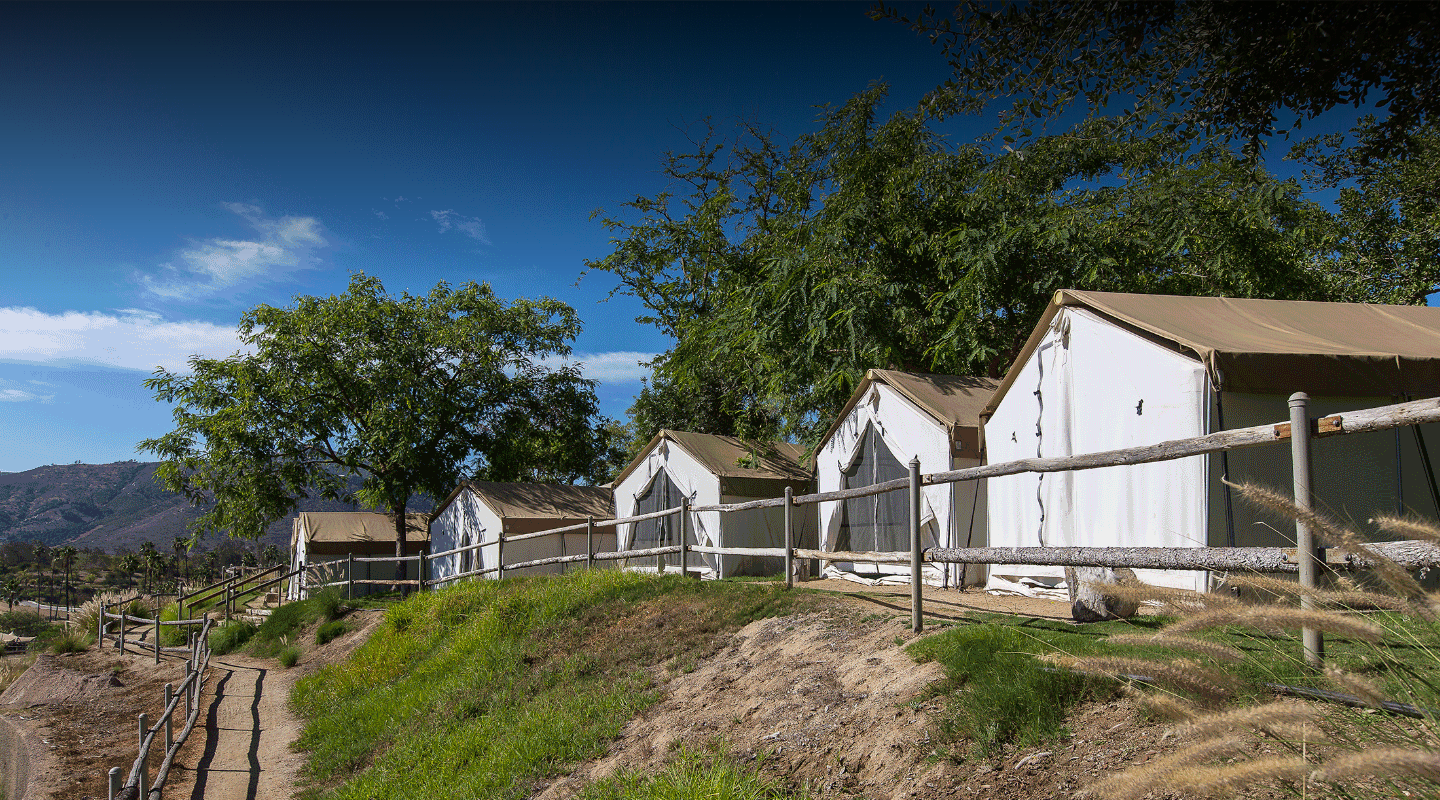
Roar & Snore Safari
$160 & up*
*Per person, plus admission. Admission is separate and required.
- CALL TO BOOK 619-718-3000
At A Glance
Pack up your “trunk” for a sleepover adventure at the Safari Park! All sleepovers include camp activities, an after-hours look at the wild lives of wildlife, guided walks, s'mores around the campfire, dinner, an evening snack, and breakfast the following morning. Choose from several age-appropriate sleepover categories with their own themes.
- Tent Options

All Ages Roar & Snore
Spend the night at the Safari Park with your family! Campers of all ages are invited to experience a sleepover that has something for everyone !
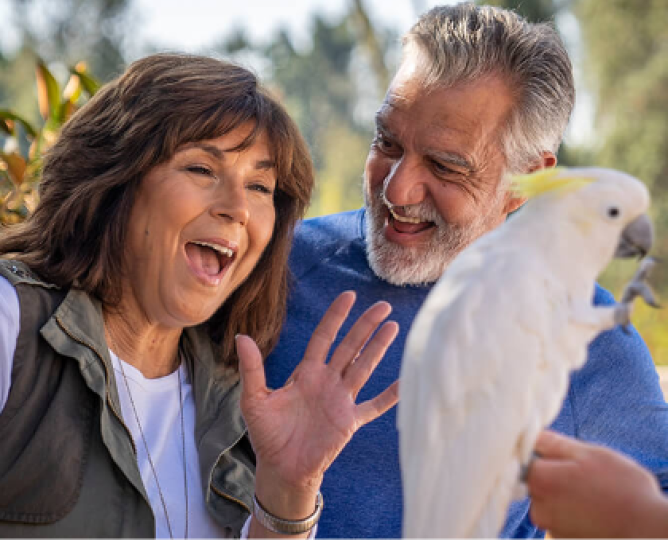
Adults Only Roar & Snore
- Ages 21 & up
Join us for an adults-only adventure camping at the Safari Park! You’ll explore the Safari Park after dark, enjoy classic camp activities, and hear amazing stories about San Diego Zoo Wildlife Alliance’s conservation work around the globe.

Girl Scouts Roar & Snore
- Ages 5 & up
Bring your troop to the Safari Park for a sleepover they will never forget! Designed especially for Girl Scouts ages five and older and their troop leaders or adult chaperones, this Roar & Snore sleepover offers a special Safari Park experience that you can only get at night. All campers will receive a special Roar & Snore patch for participating.

School & Youth Nights Roar & Snore
- Grades 3–12 with adults
Bring your students or youth groups to the Safari Park for a sleepover they will never forget! Designed especially for school and youth groups, this special Roar & Snore Safari offers a way to experience the Park in a whole new way that is perfect for your group’s next adventure.
TENT OPTIONS
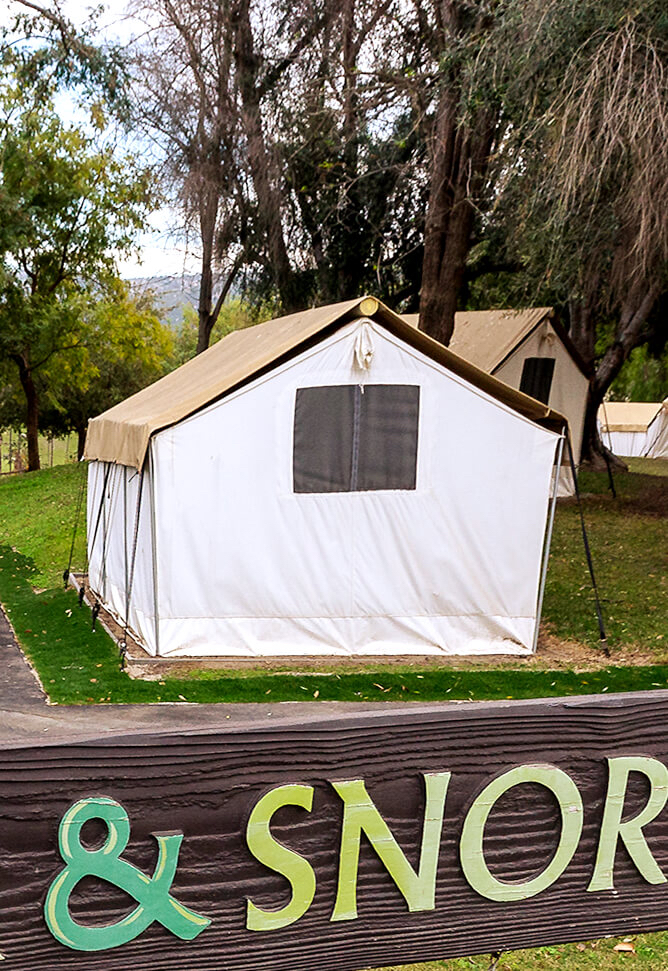
Classic Tent
- 9 x 14-foot interior
- Sleeping pads
- Traditional vinyl-covered tent floor
Our traditional camping tent with vinyl-covered tent floor and sleeping pads for up to five campers.
* Maximum five person occupancy per tent. Single campers pay a minimum two-person price. Admission is separate and required.
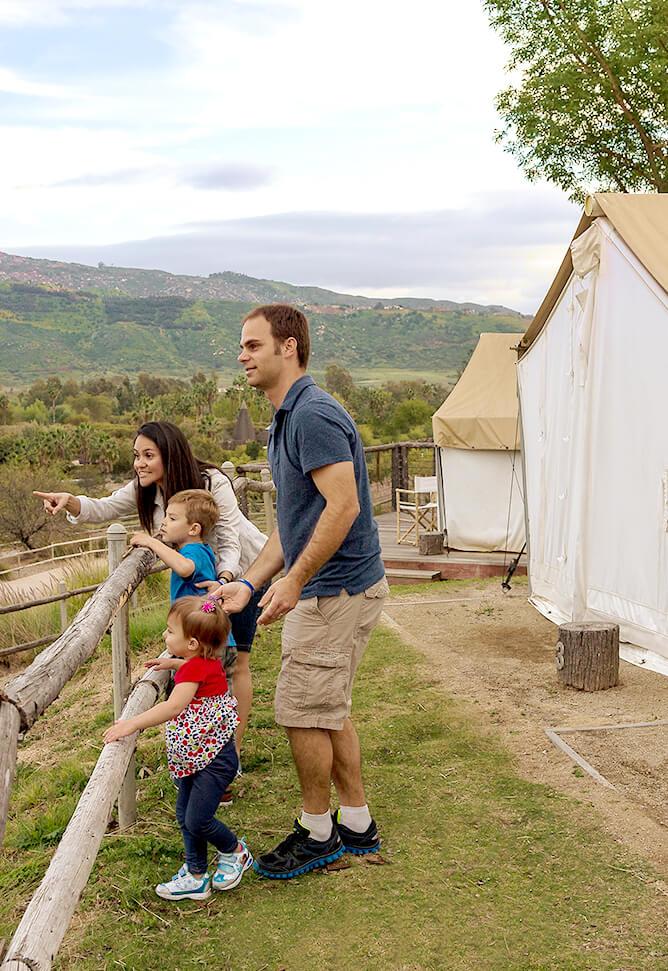
- Cots (2 bunk cots and 2 single cots)
- Electrical outlets, fan, and heater
Our traditional camping tent—with cots and a view! Spend the night looking out over the African Plains, home to grazing giraffes, rhinos, antelope, and more. Suitable for up to six campers.
* Maximum six person occupancy per tent. Single campers pay a minimum two-person price. Admission is separate and required.
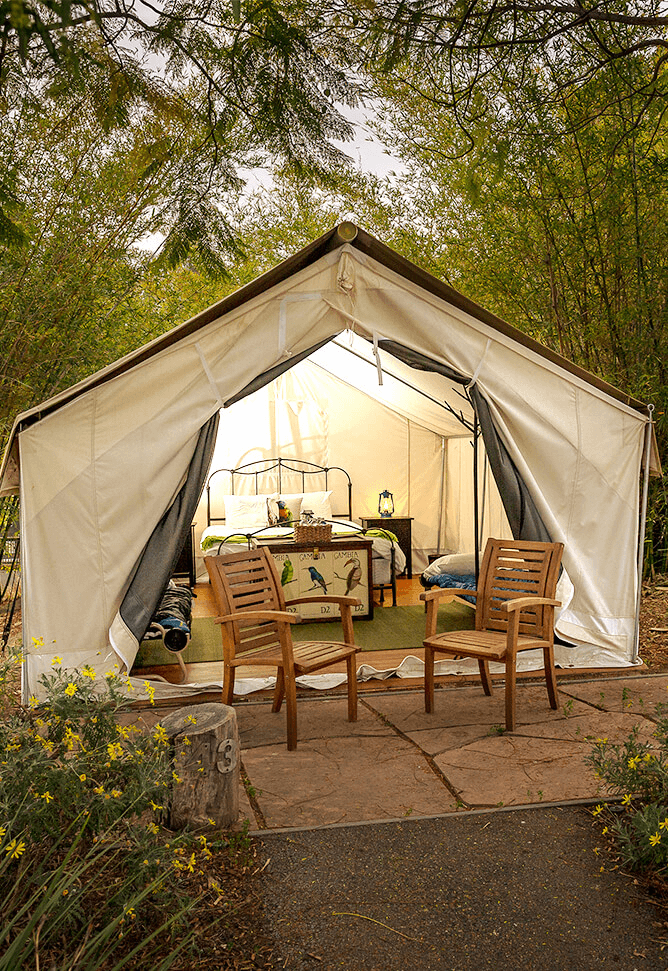
Premium Tent
- 12 x 16-foot interior
- Queen bed plus two cots
- Wood floors with area rug
- Bed linens and pillows
Our most luxurious “glamping” tent option, complete with a queen-size bed and two cots. Perfect for couples or families of four.
* Maximum four person occupancy per tent. Single campers pay a minimum two-person price. Admission is separate and required.
Enhance Your Roar & Snore Experience!
These special add-on Safaris require advance reservations and can be reserved when you call to schedule your Roar & Snore Safari. Our Reservation Sales team is ready to help you plan a perfect stay at the Safari Park.
Call 619-718-3000 for more information and reservations. Age and other restrictions may apply.
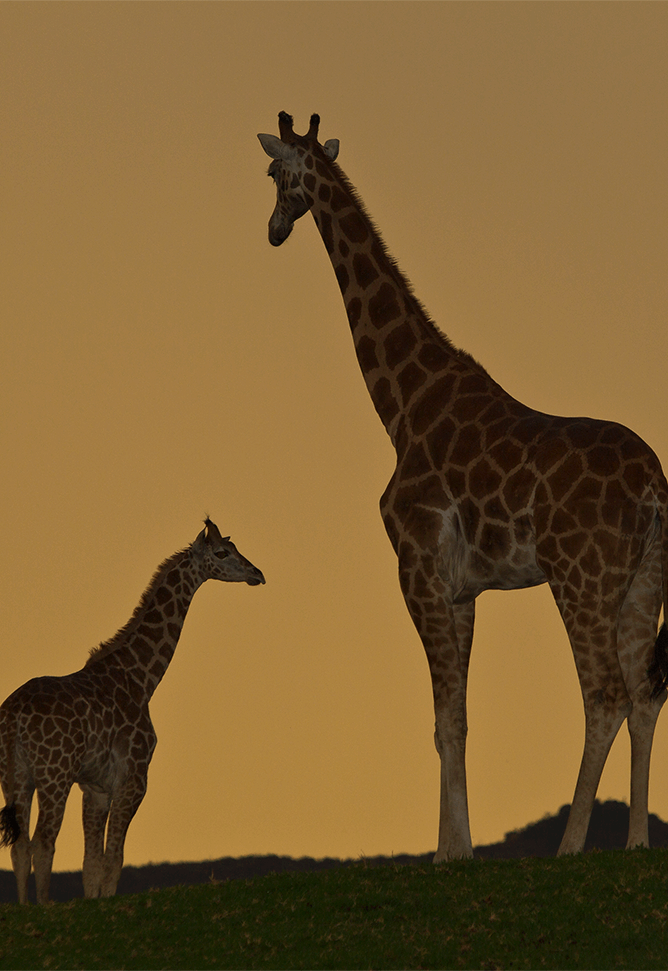
Supreme Roar & Snore
- Must have a valid Roar & Snore ticket
- Includes Flightline Safari, Night Vision Safari, Exclusive Viewing of Wildlife Ambassador Encounters & Wildlife Safari
- Guests ages 8–15 must be accompanied by paid adult; maximum 3 children per adult
Upgrade to a Supreme Roar & Snore Safari package for a whole new level of adventure! You’ll begin your evening by soaring into camp on our 2/3-mile Flightline Safari zip line. At night, take a Night Vision Safari to view wildlife of Africa and Asia through night vision binoculars. After breakfast, you’ll enjoy reserved VIP viewing of wildlife ambassador encounters. Finally, conclude your overnight experience with a Wildlife Safari into expansive savanna habitats in the back of covered, open-air safari truck for an up-close view of an amazing variety of wildlife.
To participate in the Flightline Safari component, participants must be at least 8 years old; weigh between 60 and 300 pounds; meet the minimum height requirement of 48"; wear secure, close-toed shoes; and fit comfortably in the harness.
Offered on All Ages events, Adults Only events, and some Exclusive events. Space is limited. Please call 619-718-3000 for availability and pricing.
PLEASE NOTE: Supreme Roar & Snore guests will need to check in between 3:30 and 3:45 p.m. for the Flightline portion of their Supreme experience.
YOU MAY ALSO LIKE
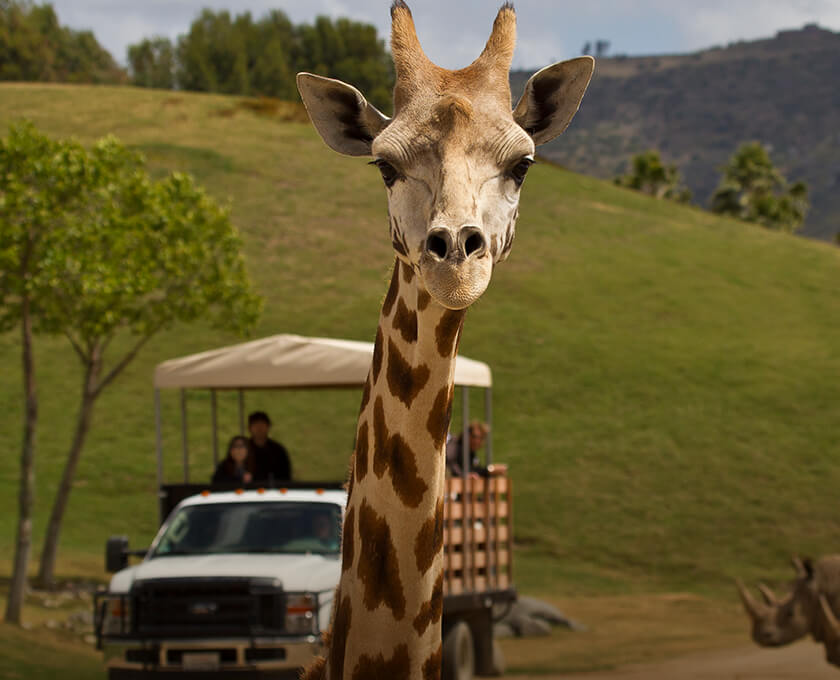
Wildlife Safari
Travel in the back of a covered, open-air safari truck into our expansive savanna habitats, with an expert guide.
Reservations
Please call us with questions or to make a reservation.

Save the Chubby Unicorns

Gorilla Shadow
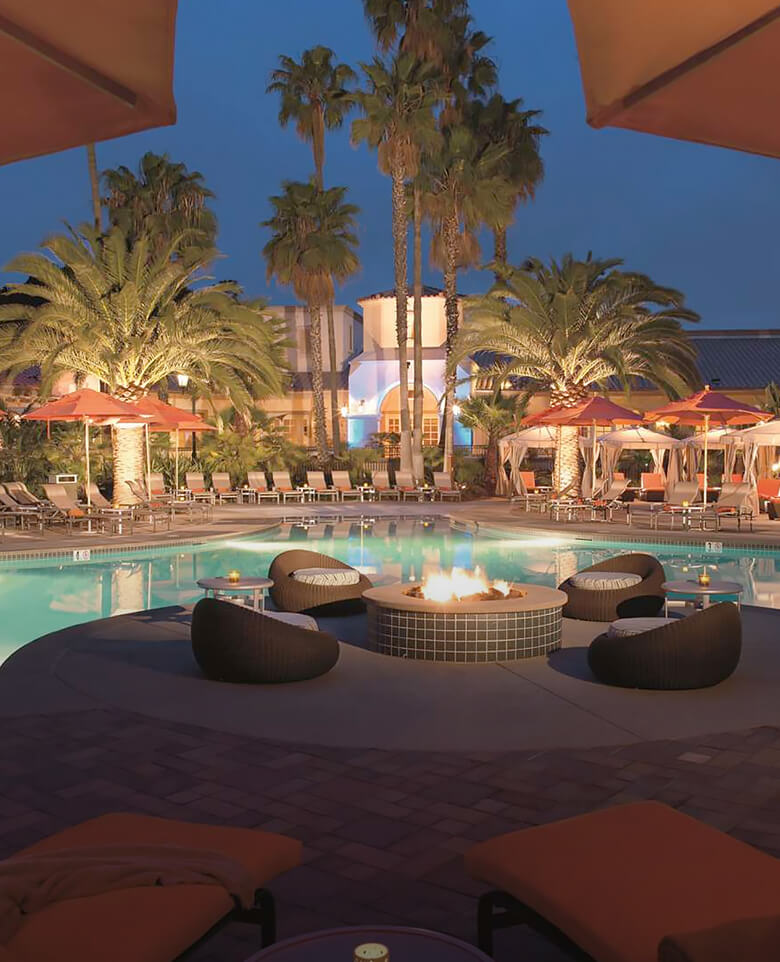
PREFERRED HOTELS
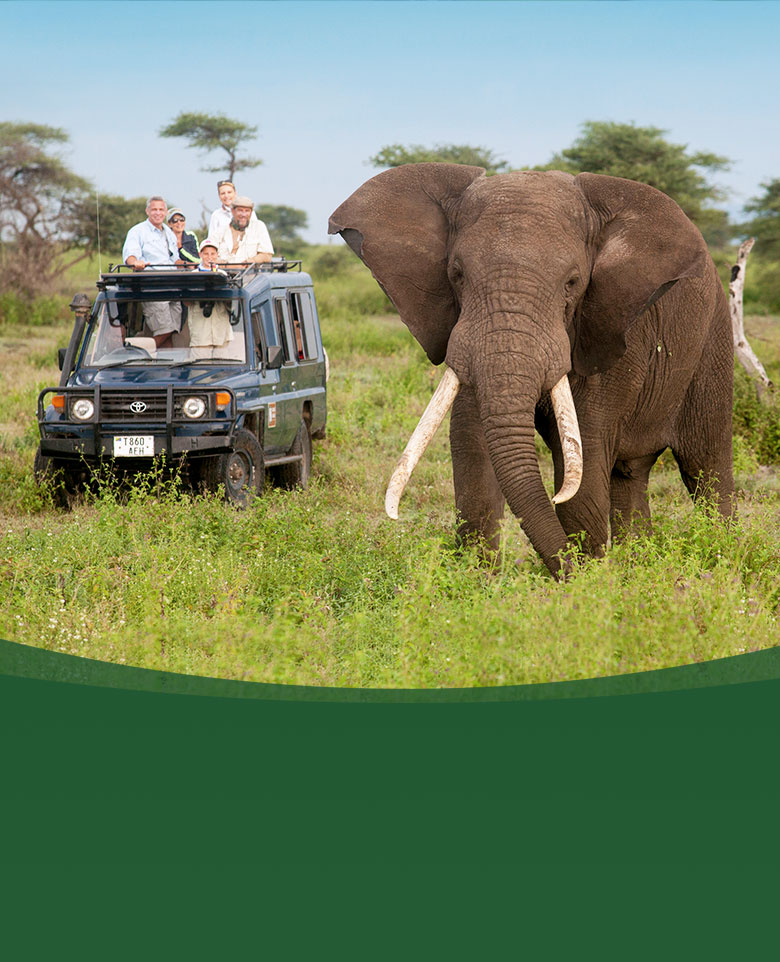
Come Travel with Us!
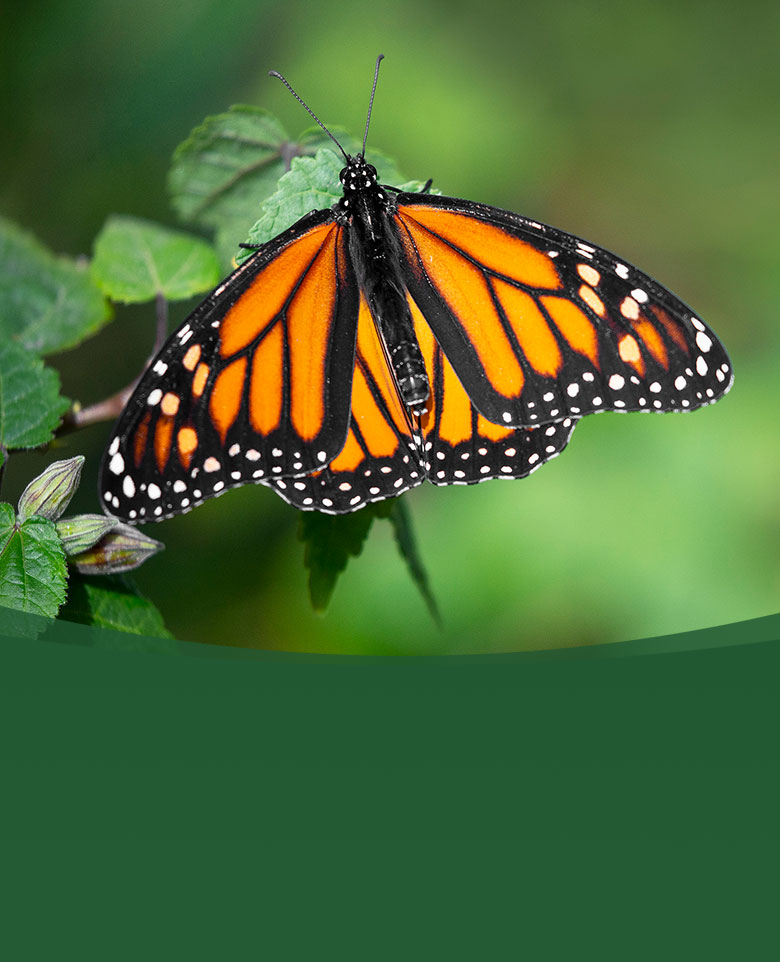
Travel with us to see Monarchs
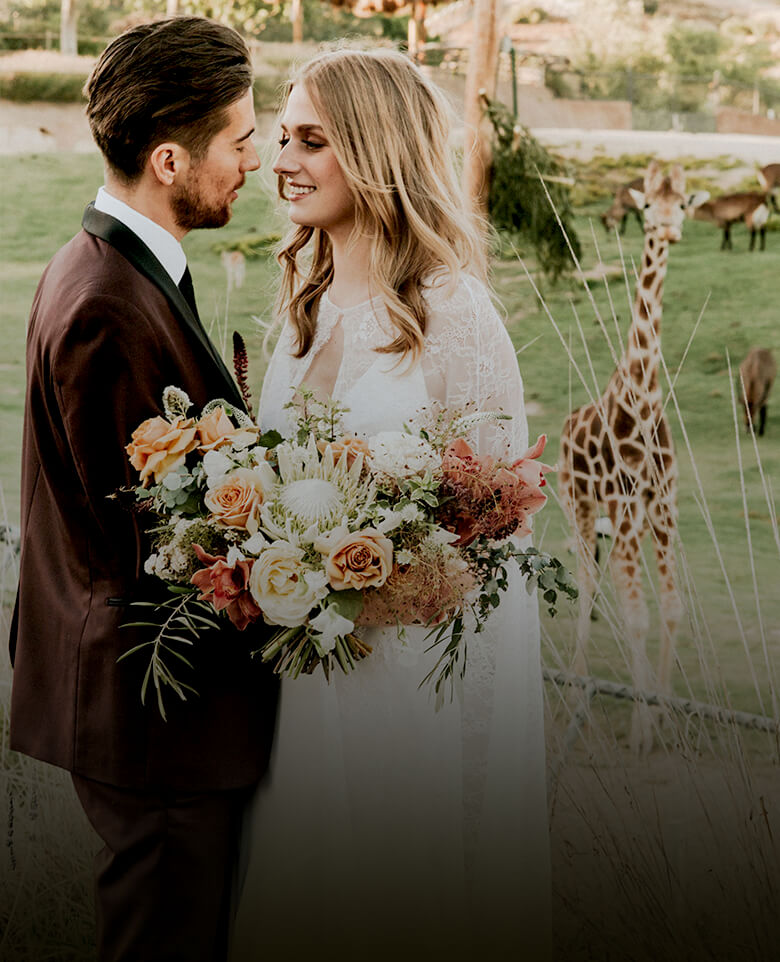
Picture Your Special Day at the Park!

IMAGES
COMMENTS
Adult female Umngani (OOM-gah-nee), who came to the Safari Park as an adult, is mother to three calves, and pregnant with a fourth. Her name means "friend," in SiSwati, accurately reflecting her sweet-natured personality. Khosi Umngani's first calf was the first of the Swaziland calves conceived and born at the Safari Park.
Matthew Bowler. Baby rhino eases into a mud puddle at the San Diego Zoo Safari Park on Sep. 2, 2022. And while the calf is cute and attracting attention, researchers are celebrating the birth ...
SAN DIEGO (May 11, 2023) - From Arabian oryx to Nubian ibex, to spotted turtles and Amur leopard cubs, the San Diego Zoo and Safari Park are brimming with babies! A spring baby boom provides guests to both the Zoo and Safari with the opportunity to see and learn about amazing wildlife including an okapi calf, a Matschie's tree kangaroo and Przewalski's horse at the Safari Park and Andean ...
Success Marks Milestone in San Diego Zoo Global's Efforts to Save the Critically Endangered Northern White Rhino from ExtinctionResearchers at the San Diego Zoo Institute for Conservation Research announced Thursday morning that they have confirmed a pregnancy in one of the southern white rhinos living at the Nikita Khan Rhino Rescue Center.
SAN DIEGO (AP) — A southern white rhino has become pregnant through artificial insemination at the San Diego Zoo Safari Park — giving hope for efforts to save a subspecies of one of the world's most recognizable animals, researchers announced Thursday.
By Bradley J. Fikes. May 17, 2018 3:45 PM PT. Victoria, a southern white rhino at the San Diego Zoo Safari Park, is pregnant. It's an event of vital importance for a program to bring back her ...
A southern white rhino has become pregnant through artificial insemination at the San Diego Zoo Safari Park — giving hope for efforts to save a subspecies of one of the world's most ...
Success Further Boosts San Diego Zoo Global's Efforts to Save the Critically Endangered Northern White Rhino from ExtinctionFor a second time this year, and just in time for World Rhino Day Sept. 22, researchers at the San Diego Zoo Institute for Conservation Research announced today (Sept. 18, 2018) that they have confirmed a pregnancy in another one of the six southern white rhinos living ...
San Diego Zoo Wildlife Alliance is thrilled to announce that Livia, a Southern white rhino at the Nikita Kahn Rhino Rescue Center, is currently pregnant from natural breeding and expected to give birth this July.
A second southern white rhino is pregnant at the San Diego Zoo Safari Park, with work being done to ensure that the northern white rhinos don't go extinct.
The San Diego Zoo Wildlife Alliance (SDZWA) has another reason to be excited for September 22nd's World Rhino Day. According to a release from the nonprofit, SDZWA's San Diego Safari Park recently ...
Rhino gestation lasts from 16-18 months. The artificial insemination of a rhino named Victoria, occurred on March 22 at the San Diego Zoo Safari Park . Victoria is one of six female southern white rhinos that were relocated to the Safari Park from private reserves in South Africa in November 2015.
A second Southern White Rhino at the San Diego Zoo Safari Park is pregnant. Skip to content. FOX 5 San Diego & KUSI News. San Diego 51 ...
Second Southern White Rhino Pregnant At San Diego Zoo Safari Park - Escondido, CA - A Southern white rhino named Amani at the San Diego Zoo Safari Park in Escondido has become pregnant through ...
This photo shows Victoria, a pregnant southern white rhino, Thursday, May 17, 2018, at the San Diego Zoo Safari Park in Escondido, Calif. The rhino, which has become pregnant through artificial ...
Flightline Safari. Ages 8 & up. $81 & up per person. Soar as high as 130 feet above the ground, with a spectacular bird's-eye view of rhinos, giraffes, and other wildlife in the savanna habitats below you. READ MORE.
The San Diego Zoo Safari Park celebrated World Elephant Day on August 12, 2018, in the best way—by welcoming a new baby elephant! The "little" boy—he weighed 277 pounds—got a big name, Umzula-zuli, so we just call him "Zuli" for short. His mother, Ndulamitsi, took great care of her baby from the very start and nursed him right away.
2920 Zoo Drive, San Diego, CA 92101. The San Diego Zoo is the Safari Park's sister park to the southwest in San Diego. Distance between the San Diego Zoo and the San Diego Zoo Safari Park is 35 miles. Please allow 45 minutes to 1 hour travel time. Purchase a two-park pass here.
This photo shows Victoria, a pregnant southern white rhino, Thursday, May 17, 2018, at the San Diego Zoo Safari Park in Escondido, Calif. The rhino, which has become pregnant through artificial insemination at the park, is giving hope for efforts to save a subspecies of one of the world's most recognizable animals, researchers announced Thursday.
The San Diego Zoo Safari Park is proud to announce that the newest baby elephant born at the Park has been named Mkhaya. The youngest member of the herd—born Sept. 26 to mother Umngani (pronounced OOM-gah-nee)—was named for Mkhaya, a wildlife reserve in the southern African nation of Swaziland. The name follows the Safari Park's tradition ...
San Diego Zoo Safari Park Accessibility Guide For general questions not answered here, please email [email protected], or call 619-231-1515 after 8:30 a.m. PDT. Shop the Collection
These special add-on Safaris require advance reservations and can be reserved when you call to schedule your Roar & Snore Safari. Our Reservation Sales team is ready to help you plan a perfect stay at the Safari Park. Call 619-718-3000 for more information and reservations. Age and other restrictions may apply.
The San Diego Zoo Safari Park welcomed a male okapi calf, born to first-time parents Mahameli (mother) and Mpangi (father). Check out the photo gallery of the San Diego Zoo Safari Park's new ...
ESCONDIDO, Calif. — The San Diego Zoo Safari Park is a world-class experience with 1,800 acres of sprawling savannas teeming with wildlife and botanical gardens.